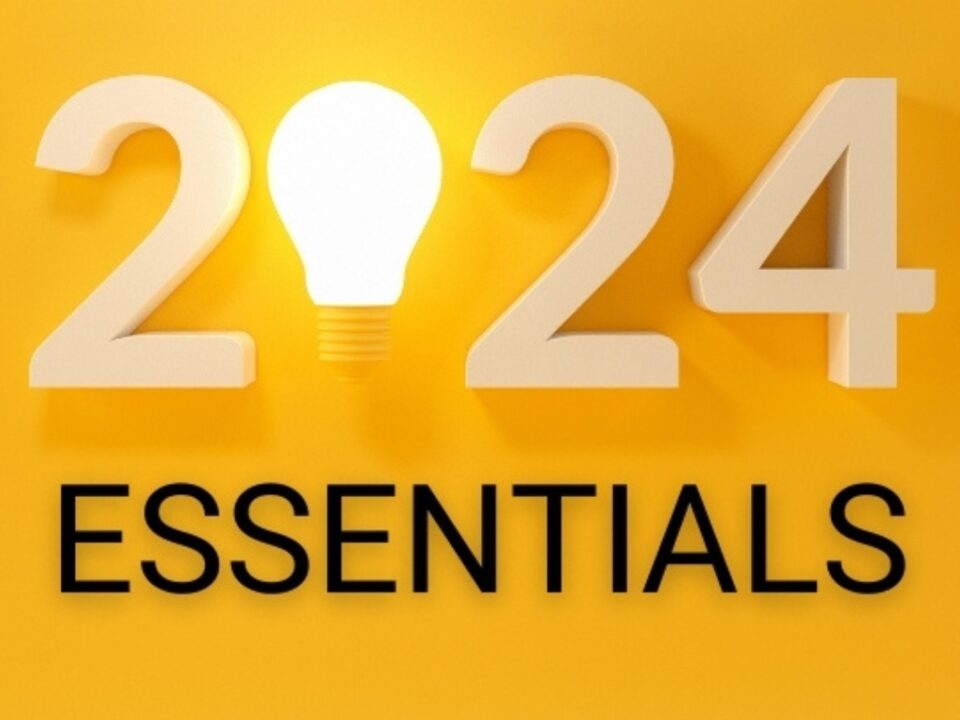


What Goes into a New Website Design Project?
September 1, 2020


The Best SEO Strategy 2020
December 1, 2020Are you new to digital marketing and want a quick and easy way to start the process? Everyone has to start from somewhere, and it is important to organize your first digital marketing strategy in such a way that makes it simple to do and easy to maintain, evaluate and evolve. Take some time to work through our comprehensive guide to setting up your first digital strategy so that you can build both your knowledge and confidence in how to market your product or service.
What is a Digital Strategy?
A digital strategy is when a company or individual plans to use technology to improve the performance of their business. In this day and age, technology is everywhere and can be a highly effective tool for pushing sales, generating leads, and growing a large following.
A digital strategy takes time to craft, and it is sensible to plan it well in advance of using it so that you can monitor the effects of the strategy and understand where you need to make changes to widen your audience even further.


Why is a Digital Strategy Important?
A digital strategy is incredibly important for businesses who are looking to grow their offering and want a clear strategic plan to help them achieve their goals. Some of the key reasons for having a digital strategy include:
- Developing an understanding of how technology links with your goals and plans for the future of your business.
- Ensuring that your brand keeps up with the competition.
- Stopping you from missing out on potential opportunities that you can source from using technology.
- Helping you to target the people that you want to interact with your brand.
- Giving you a wider reach so that you can engage people who are outside your current location and gives you the chance to reach other non-local audiences.
- Enabling you to use digital analytics to learn more about your audience so you can tweak your offering to maximise impact.

Does My Business Need a Digital Strategy?
Yes! Every business should have a digital strategy to help you plan how to hit your goals and targets when using technology. It does not matter how small your business is; it is sensible to plan your digital strategy to help you grow and reach more people.


The Steps To Success
Now you know that a digital strategy is a vital aspect of any business you need to know how to plan one. It does not need to be a difficult process, but you should have a clear idea of the types of digital presence that you can use and the impact these have on your business. Check out some of the key digital assets that you need to implement as part of your plan:
Website
If your business does not have a website, then it is time to invest in one. A website gives you the ability to share what you have to offer with your audience. It also allows you to sell products or services and gives you the opportunity to communicate with your audience.
If you already have a website, then it is time to consider how effective it is at reaching your target audience and how many site visits you average in a month. All digital strategies should include a website but rather than just hitting create on a website builder, you need to consider how your site is going to work first.
Think about your audience, who they are and what they like. It is always a good idea to come up with a customer persona so that you can use this to help you target your real audience. When you know who your target audience is then you need to plan a website that appeals to them rather than to you.
Consider color, font, and accessibility so that you can entice them in and then focus on making your site easy to navigate. This means using clear call to action banners and having an intuitive navigation bar that lets them get to what they want with ease. Offering a site that is designed well and has your client base in mind will help you to ensure return visits and higher profits.
It is also important to have a site that loads quickly and is listed in search engine results pages. Many website builder templates are not accessible to search engine crawlers, and so you will never rank on a search engine results page if you choose this route to plan your site. Instead, check if the site you are building can be accessed and then use search engine optimization (SEO) strategies to help you rise up the ranks.
Once your site is up and running, you will also need to review your analytics to see who is accessing your site and what is popular on your pages. Make sure you put this analysis within your digital strategy so that it happens at least once a month if not more. When you have a few months of analysis to look at, you will be able to identify any areas that are not converting as well as you would want, giving you the chance to modify the pages.


Paid Search
The next part of your digital strategy should focus on paid searches (pay per click PPC). This is when you advertise your business on a search engine or other websites and pay the site owner each time your advertisement is clicked. The advertisement is a direct link to your website and should help you to drive more traffic to your site.
There are many PPC opportunities online, and you should consider where your money is best spent; either on a search engine like Google or on a visually compelling site like Instagram or Facebook. Many businesses opt for search engines because they attract a huge audience so your ad can be shown to more relevant consumers when someone searches for a product or service that you sell.
However, when it comes to creating your advertisement, you need to consider the popularity of the product or service you are selling because of the potential competition you will have. Utilizing a service like Google Ads will help you to curate the advertising you want at a price you can afford. You simply enter all the information you want to share and then stipulate how much you are willing to pay per click. Obviously, the higher the amount, the more likely your ad will be seen by more people.
Most digital strategies will have a clear process around organic traffic as this is typically the best way to drive the right users to your site. However, using PPC also allows you to get more traffic quicker as well as providing you with advertising analytics to learn more about the users that are interacting with your ads.


Social Media
The use of social media is a fundamental part of any digital strategy as so many people interact with their social media over the course of the day rather than search engines. You need to plan out how to use social media for advertising your business and also how to interact with potential clients.
There is a wide range of social media sites, and it is a good idea to sign up for accounts with them all so that you can maximize your impact. Try to use the same name across sites so that people can find you easily on each platform and then focus on your social media planning so that you share content that is relevant and topical.
You should aim to consistently post to keep your audience interested as businesses who only offer sporadic updates tend to have a smaller following. Aim to share relevant information once a week, fun quizzes, memes and pictures every couple of days and try to get your audience to be active on your page by asking them questions and offering competitions.
You can opt to manage each account separately or utilize a social media management page that allows you to post to all accounts at the same time with the same information. This will increase your overall impact but not your workload. The other great thing about using social media management software is that you can schedule posts in the future so that you do not need to spend hours every day working out what you want to say.
When you plan in advance, it means that you will not need to get online every day of the week, enabling you to have a strong impact even on your days off! All you will then need to arrange is replying to potential customers who engage with your posts. Taking the time to plan your posts in advance also gives you the opportunity to focus on your digital strategy and means you will be able to enjoy hitting the goals you have set for yourself.

Blog
Blogs are a well-known digital marketing strategy that help you to share information and opinion with your audience while subtly advertising your product or service. When you have a functioning website, it is wise to plan a bi-weekly blog that is centered around your industry and aims to give up to date information to a captive audience.
You may choose to make a how-to guide, an opinion piece, or an industry update offering. You may also choose to discuss your product or service in more detail so that people understand what benefit they would get from using it.
Whatever the topic of your blog, it is important to keep the length readable (between 500-2500 words), to focus on what your audience wants and to post regularly so that it becomes part of a person’s weekly reading. Most blogs are updated once or twice a week, and blogging regularly is a key to it becoming successful.
When you add blogging to your digital strategy, you will need to consider the use of SEO strategies to help your target audience find your work. This includes using specific SEO keywords that will enable search engines to list you on their result pages. It is also important to plan for the evolution of your blog as it becomes more popular to keep it relevant and interesting to your audience. This can include tactics such as guest blogging, audience comment and including multimedia to help maintain interest.
As with social media, you can list blogs for publication in the future so that you are able to write them well in advance. This tactic gives you the opportunity to get ahead of yourself so that nothing gets in the way of sharing online content. You can even engage a content writer to write you a batch of posts that you can then schedule in advance. Ultimately, a blog done well can help to grow your business exponentially, so it is worthwhile spending the time planning it as part of your new digital strategy.

Email Marketing
The final part of planning any great digital marketing strategy is communication with your audience. You communicate with them when they engage with your websites, social media and look for you on search engines, but it is also important to consider how to target them directly. This is where email marketing can be an asset.
Email marketing is when you use email to promote yourself, your business and your products or services to any existing customers or any potential ones. Years ago, people would have been targeted using postal mail, but these days, email marketing is the preferred choice as it is quicker, cheaper and has more impact.
Whenever you send an email out to a customer or potential client, it can be considered to be email marketing, unless it is to reply directly to a query or confirm an order. Email marketing includes sending out newsletters, company messages to customers, updating your email list about changes to your organization and sharing special offers and events.
When you are planning your digital strategy, it is a good idea to incorporate regular email newsletters and personalized emails to customers when you are attempting to entice them back to your business. One really well-used technique is to provide a personalized birthday offer to your clients that gives them a great discount in return for spending money at your business.
While people have become savvier to spam type emails, email marketing remains a valuable digital strategy. The key to it being successful is to target your audience with information that adds value to their lives and draws them into what your business has to offer.


Summary
It is clear that any business needs to assess how they are making use of technology to further their business interests. Planning a robust digital strategy will not only help you to find more clients, but it will also give you a baseline from which you can monitor your digital successes and allow you to modify any areas that are not achieving your goals.
Take your time to plan properly and ensure that every person in your team understands your plan. This way, you are more likely to achieve success. Technology is able to reach more people then you could ever imagine, so start harnessing its powers today!
—
Janszen Media designs and develops beautifully responsive websites, optimized for SEO and user experience. If you need a new website contact us at info@janszenmedia.com for a free quote.
For more website and digital marketing tips, follow Janszen Media on Facebook, Twitter, and Instagram.





